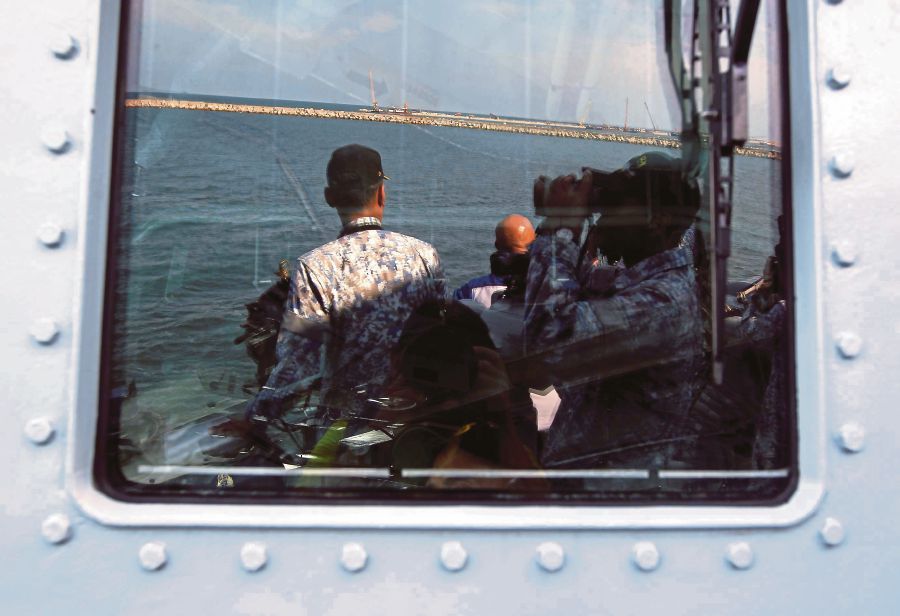THE temperament of the territorial dispute in the South China Sea between the multiple claimants has generally improved compared to a year ago. Back then, heated rhetoric, disdain and even threats were the narrative of the day. This was both in support of, and against, the ruling of a Permanent Court of Arbitration tribunal against China’s nine-dash or dotted line claims and by extension, the bulk of its actions in the South China Sea.
In August, China and Asean announced the adoption of a framework for the Code of Conduct (CoC) in the South China Sea, heralded by both sides as a major step forward. The Duterte-led Philippines, which initiated the tribunal proceedings under the previous Aquino administration, continues its détente with China, “setting aside” what was a very favourable ruling.
Malaysia and Brunei, while determined not to recognise China’s claims, are unlikely to rock the boat. Both prize regional stability and consider China a key economic and trading partner. Vietnam, while relatively defiant, has too much to lose in taking things to the edge — as seen from the recent Repsol episode when Hanoi backed down in the face of threats from Beijing.
China, which continues to ignore the tribunal ruling, has toned down its sentiments of outrage and is redoubling its charm offensive towards Asean and its four claimant states. Instead of the stick, the carrot is what Beijing is touting these days — and it certainly has a lot of carrots to offer. Its policymakers, diplomats, scholars and think-tankers actively call for dialogues on the possibility of minimising the sovereignty aspect of the dispute and considering joint cooperation or development in the disputed areas. They also argue that Asean should not let “outsiders” interfere and sow the seeds of discord.
Such developments have led to an increased chatter of a greater convergence on the dispute between these parties. Nevertheless, there are outstanding hurdles in the way that must to be taken into account.
First is the issue of sovereignty which, contrary to China’s insistence, is not a bilateral matter. All the claimant states have disputes with each other and not just with China. Pursuing joint development and setting aside questions of sovereignty when there are multiple parties claiming the same space is infinitely more complicated when compared with a bilateral dispute. It is commonly believed that China’s bilateral and joint development strategy is in place to derail any convergence among the Asean claimant states against it. No Asean claimant state has officially subscribed to China’s approach yet.
Second, while the rhetoric over dispute has somewhat mellowed over the last year, tensions aren’t far from the surface. China via its navy, maritime enforcement agencies and fishing fleets, maintains an active, almost constant presence in the territories claimed by all other states.
Meanwhile, the building of facilities in its reclaimed features continues at full speed. It is just a matter of time until they can host and operationally deploy both maritime and aerial assets, potentially changing the game for Malaysia and Brunei. Both, till recently, enjoyed the luxury of distance from the southernmost reaches of China, which have largely shielded them from the full extent of Chinese activities in the South China Sea.
Vietnam continues to reinforce and expand its own occupied features, while increasing the deployment of military assets, acquired specifically to make any potential hostile aggressor think twice. The role of external stakeholders also comes into play. The United States Navy has just completed its third freedom of navigation operation close to the artificial islands this year. France has quietly conducted two such operations, while the United Kingdom is considering one next year. Japan, India and Australia are ramping up their defence diplomacy with key Asean countries and continue to stress the relevance of the tribunal decision, much to the chagrin of China.
Third, despite the talking up of CoC by diplomats from Asean and China, it is still doubtful whether it will have a meaningful impact on the conduct of parties in the dispute. What more when even the process of agreeing to a mere framework itself was held up 15 years by parties with vested interests. Its predecessor, the Declaration of Conduct, ended up essentially as a compromise between doing nothing and having a legally-binding agreement, which wasn’t even lived up to in spirit by most of its signatories.
Yes, there are key areas of potential convergence. These include the urgent need for all stakeholders to manage fish stocks and the ecological health of the South China Sea which, according to recent accounts, is in a severe state with dire implications to coastal communities that depend on it. Additional areas that can be considered “low-hanging” fruits include cooperation on maritime charts for safer navigation and efforts to jointly tackle maritime crime and humanitarian aid and disaster relief.
To ensure a workable convergence, there must be an element of trust and confidence-building among claimant states and stakeholders — something that is sorely lacking among all parties. This should be the immediate short-term goal for stakeholders, especially among Asean, its claimant states and China.
This article first appeared in The New Straits Times on 24 October 2017





